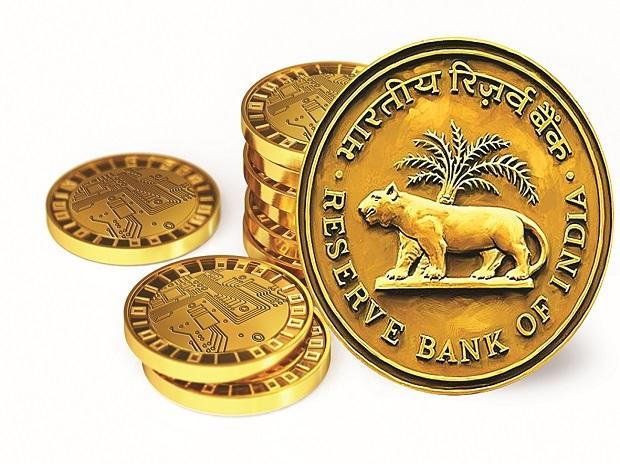[ad_1]
There is immense interest in the Reserve Bank of India’s digital rupee, a proposal announced in the last Budget and a pilot for which is underway.
The Central Bank Digital Currency (CBDC), digital or e-rupee, could transform the way Indians make payments, but its success depends on imparting knowledge, robust technology and data security, stakeholders say. The finance industry expects the government to announce provisions in the Budget next month to create supporting infrastructure for CBDC.
After testing the wholesale CBDC, the RBI started the pilot for the retail segment with selected banks in restricted regions.
“Since the launch of its pilot project in December, around 16,000 users have conducted e-rupee transactions. This is a great start. We believe that with further ease of use, awareness, and increased acceptance points, the number of users and transactions will amplify,” said Anand Kumar Bajaj, founding managing director and chief executive officer (CEO) of PayNearby, which assists corporates in semi-urban and rural markets.
By the end of January, there will be 50,000 retail users of the digital rupee under the pilot project.
What really is CBDC or e-rupee?
The RBI describes CBDC as a legal tender issued by a central bank in a digital form. It’s same as a fiat currency and is exchangeable one-to-one with the fiat currency – only it’s form is different. The CBDC can be transacted using wallets backed by blockchain. While the concept of the CBDC sprang up directly as a result of the boom in crypto assets, particularly Bitcoin, it is different from these crypto assets. Bitcoin and other similar crypto coins are not issued by the State and thus lacks ‘legal tender’ status.
The CBDC, unlike cryptocurrency, represents legal tender that will be distributed through intermediaries such as banks, the RBI has said. It can be transferred electronically from one holder to another almost as easily as cash changes hands.
How will CBDC work?
Issued in the same denominations as paper currency and coins, a user will need to create a digital wallet offered by the participating banks. CBDC transactions can be both person-to-person as well as person-to-merchant.
To create a digital rupee, a user will have to pay the equivalent amount from the bank account, but all subsequent transactions will move from wallet to wallet, providing a greater degree of anonymity when compared to traditional digital transactions. Also, the digital rupee can be converted back into bank deposits.
“A well-functioning CBDC system has advantages that can further boost India’s digital payment landscape,” adds PayNearby’s Bajaj.
The digital rupee has several advantages, particularly for those making international transactions. With the digital rupee, sending remittances home would become attractive. Even sending money to people on vacation or working outside the country can become cost-efficient.
At present, customers have to pay a fee to the bank to make cross-border payments. Bankers say the cost of sending money overseas ranges between Rs 500 and Rs 750 for Rs 1 lakh. For inward remittances, the cost of sending $100 is about $5-7.
The CBDC can bring down these costs. For example, if the Indian and the American CBDC systems can talk to each other, we won’t have to wait to settle transactions.
Bajaj says CBDC “can go a long way” in streamlining cross-border transactions, which presently involve multiple currencies and country-specific regulations. CBDC will make the government distribution of subsidy funds efficient and help India move towards a more inclusive financial ecosystem.
After the pilot programme concludes, the RBI will assess the performance of the system and its acceptability. It will likely then scale up the CBDC to a wider user base.
“While improvements in operationalisation shall be taken care of by RBI over time, the central government is expected to provide requisite support on the broader level in the Budget announcement,” said Jyoti Prakash Gadia, managing director at Resurgent India, an investment banking firm.
Gadia expects the Budget to offer support for networking, digitalisation and enabling legislation for digital currency. “The Budget may accordingly propose for additional provision on concessional infrastructure creation and more penetration for internet service or digitalisation across all parts of the country. The Budget may also propose incentives for the creation of robust cyber security for safer transactions.”
Harish Prasad, head of banking–India, FIS, says retail CBDC can open up new avenues for payments apps. “The incorporation of CBDC payments into payment apps can drive adoption and encourage the displacement of the use of physical cash for lower value transactions and payments,” Prasad says.
Pratik Gauri, co-founder and CEO of 5ire, a blockchain network, says he is “thrilled” at the introduction of CBDC. “We have received a lot of interest from various stakeholders in the government to explore collaboration on the implementation of large-scale public projects. I think the government is also slowly recognising the value of trust, transparency and security in blockchain,” he says.
Gauri says it is important that the Budget creates a decentralised system. “A centralised system purposefully skirts innovation and development of a transparent and accountable system. Blockchain and decentralisation are necessary for the success of CDBC. In my opinion, what RBI (and the government) should aspire for is to build a transparent and robust digital infrastructure.”
He says CBDC can increase the efficiency of transactions as well as reduce the costs associated with managing cash. “For example in India, gig workers struggle with a typical T+7 cycle of payment settlement. CBDC can help with real-time payment and take India’s payment infrastructure to the next level.”
Finance Minister Nirmala Sitharaman’s Budget speech last year said the RBI would introduce a digital rupee. “Introduction of CBDC will give a big boost to the digital economy. Digital currency will also lead to a more efficient and cheaper currency management system. It is, therefore, proposed to introduce Digital Rupee, using blockchain and other technologies, to be issued by the Reserve Bank of India starting 2022-23,” she said.
[ad_2]
Source link



